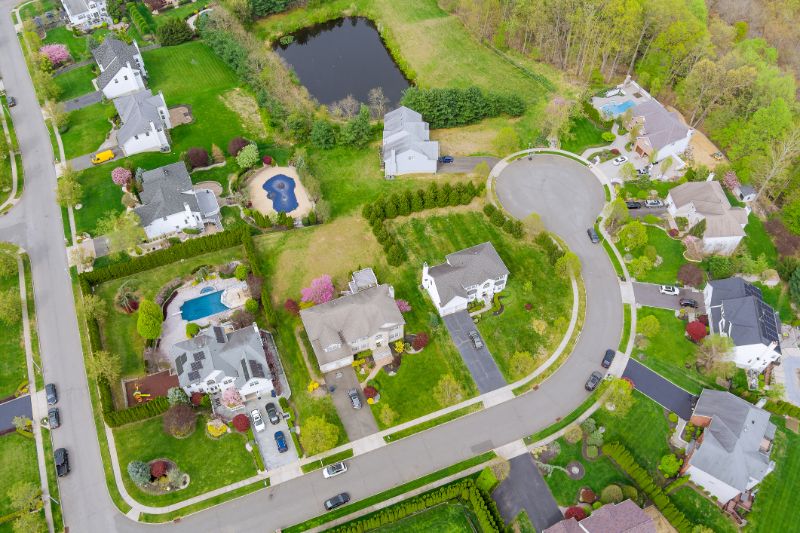 California is known for its abundant natural beauty and vibrant cities. For many people, the Golden State is an ideal place to live. However, affordable housing is hard to come by. In places like Los Angeles and the Bay Area, housing prices have gone through the roof due to high demand and not enough inventory.
California is known for its abundant natural beauty and vibrant cities. For many people, the Golden State is an ideal place to live. However, affordable housing is hard to come by. In places like Los Angeles and the Bay Area, housing prices have gone through the roof due to high demand and not enough inventory.
This could change in a few years. With Senate Bills 9 and 10 signed into law in September 2021—and new legislation like Senate Bills 450 and 1123 passed in 2023 and 2024—California has significantly reduced the scope of single-family zoning across the state.
Senate Bill 9, or the California Housing Opportunity and More Efficiency (HOME) Act, makes it easier for a homeowner to build a duplex or a multifamily structure on their property or to subdivide their existing lot. However, in April of 2024 a judge struck down the law for five cities, Redondo Beach, Carson, Torrance, Whittier and Del Mar. Attorney General Rob Bonta filed a notice of appeal about the decision.
Senate Bill 10 allows local governments to rezone for up to 10 homes or residential units per parcel of land in an urban area or in lots close to mass transit.
Senate Bill 450, effective January 1, 2025, requires cities and counties to streamline the approval process for certain urban lot splits and two-unit projects that meet SB 9 criteria. It also extends protections against discretionary delays and reinforces transparency and deadlines around public hearings and ministerial approvals.
Senate Bill 1123, passed in 2024, extends the reach of 2023’s SB 684. It allows for subdivision streamlining of single-family residential lots in single-family zones, provided those lots are vacant and under 1.5 acres. It preserves a 10-unit maximum for for-sale lots but explicitly excludes Accessory Dwelling Units (ADUs) from the count if the local government approves them—effectively allowing up to 20 homes. This is designed to boost “missing middle” housing, a critical component in expanding entry-level homeownership opportunities.
There is a lot to unpack about the zoning changes in California and their effect on people with properties in the Golden State, as well as on buyers who are looking to move here.
Therefore, this article will:
-
- Examine the elimination of single-family zoning in California
-
- Give you clarity on Senate Bills 9, 10, 450, and 1123
-
- Show you the pros and cons of these legislative changes
Table of Contents
- What is single-family zoning in California?
- What does Senate Bill 450 do?
- What does Senate Bill 1123 do?
- The origin of single-family zoning
- How single-family zoning in California led to higher prices
- FAQs on Senate Bills 9 and 10
- Prepare for the elimination of most single-family zoning in California with Top Realtor Martin Feinberg
What is single-family zoning in California?

Zoning dictates what type of building can be constructed in a certain area. Single-family zoning is a legal classification that restricts a parcel of land to one standalone home, prohibiting multifamily housing like duplexes or townhouses.
Critics of single-family zoning say it is exclusionary, implicitly denying people of color access to White neighborhoods. As much as 75% of the land zoned for residential use in many American cities is reserved exclusively for detached single-family homes. This national practice was established in 1926 after a watershed Supreme Court ruling.
Opponents of single-family zoning say that this practice has led to the increased cost of housing, even as it has stymied supply. Much of the wealth of an American family is linked to housing, so many scholars believe that single-family zoning has led to entrenched segregation in numerous cities across the United States.
What does Senate Bill 450 do?
Senate Bill 450, effective January 1, 2025, enhances and enforces the provisions of Senate Bill 9. It removes barriers that local governments may use to delay or deny SB 9-eligible projects. Among other things, SB 450:
- Requires local governments to adopt clear standards for approving or denying two-unit developments and urban lot splits.
- Prohibits the use of public hearings to delay ministerial approvals.
- Establishes a 60-day deadline for approval or denial of eligible projects.
- Reinforces anti-displacement protections and ensures transparency in review timelines.
This law is designed to ensure the full implementation of SB 9 by clarifying ambiguities and holding local governments accountable for compliance.
The passage of Senate Bills 9 and 10 was designed to reverse this trend and open up formerly exclusive neighborhoods to more residents by allowing additional homes per lot or streamlining rezoning.
What does Senate Bill 1123 do?
Senate Bill 1123, authored by Senator Anna Caballero, builds on SB 684 (2023) by further streamlining subdivisions on small parcels of land. Specifically, it:
- Applies to single-family zoned parcels that are vacant and under 1.5 acres.
- Allows these parcels to be subdivided into for-sale lots—up to 10 units by right.
- Excludes Accessory Dwelling Units (ADUs) from the 10-unit cap if the local government permits them, potentially increasing the unit count to 20 homes.
- Encourages the development of “missing middle” housing, such as townhomes and cottage courts, to improve access to starter homes and boost homeownership.
This legislation marks another step toward reducing exclusionary zoning and expanding access to attainable housing across California.
The origin of single-family zoning

The origin of single-family zoning Much of California’s zoning history was shaped by developers like Duncan McDuffie, whose contracts banned people of color from buying homes in certain neighborhoods. Zoning was used to block multifamily housing and minority homeownership.
In 2021, Berkeley took a historic step by voting to end single-family zoning citywide. This shift signaled a broader statewide effort toward housing equity.
The pros and cons of single-family zoning

Proponents of single-family zoning say:
- Eliminating single-family zoning could stress infrastructure like water and electricity.
- Increased density may lead to noise and reduced property values.
- Developers might prioritize profit over affordability, leading to gentrification.
- Even if a property qualifies for a lot split, there are significant costs, time commitments, and bureaucratic hurdles to consider.
Opponents of single-family zoning say:
- Building more homes on a single parcel of land rather than just one home will lead to lower prices because the cost of the land is distributed among more houses.
- Increased density will boost local businesses that rely on foot traffic, like bakeries, restaurants, and hardware stores.
- Broader housing access promotes equity and reduces climate impact.
- Medium-density housing can make exclusive neighborhoods more accessible.
- Supporters of the so-called “gentle density movement” say that building more homes in places that were previously reserved for single-family houses can lead to a more democratized area. As more neighborhoods open up, cities become more equitable and sustainable.
- Even back in 2003, or 19 years ago, the National Association of Realtors had already produced a report with the U.S. Environmental Protection Agency to show that density boosts a community’s fiscal health and assists in improving security. Since then, the population of California as well as the number of people moving to this state has drastically increased, underscoring the need for denser housing.
How single-family zoning in California led to higher prices

Over-reliance on single-family zoning reduced housing supply and drove up costs. In October 2024, the median price of a single-family home in California was $888,740. This is more than double the national median, $411,700.
California’s population grew by 108,000 in 2024 to reach 39,529,000 as of January 1st, 2025. Growth rates for both population and housing have slowed compared to earlier decades. Statewide housing grew by 0.84 percent in 2024, barely down from 0.85 in 2023. California added 125,228 housing units. This included 26,648 Accessory Dwelling Units (ADUs), bringing the total housing stock to 14,949,001 units. New construction added 118,957 housing units. Of these, 70,694 were single family housing units, 53,543 multi-family housing units, and 991 mobile homes. ADUs are included in the single-family category. They were 37.7 percent of the state’s new single-family housing and 21.3 percent of total new housing.
FAQs on single-family zoning in California

While Senate Bills 9 and 10 mark the end of single-family zoning in California, their impact won’t be immediately felt. Read on to find out why and learn about the details of both laws.
Q: How does Senate Bill 9 work?
The California HOME Act, commonly referred to as SB 9, went into effect in the beginning of 2022. SB 9 allows property owners in single-family zones to split their lots and build up to four units—two on each lot. However, there are limits and exemptions.
Q: What are the key SB 9 limitations?
- Only urban lots are eligible; high-risk areas (e.g., wildfire zones) are excluded.
- Minimum lot size: 1,200 square feet per parcel.
- Owner must live on the property for at least 3 years.
- No short-term rentals or demolition of recent rentals or low-income housing.
- No off-street parking required within 0.5 miles of public transit.
The Terner Center estimated SB 9 could enable 700,000 new units, especially in cities like Los Angeles. However, as of December 2024 only 660 SB 9 applications were submitted. 310 of those projects were approved and only 25 projects reached completion.
Q: How does Senate Bill 10 work?
SB 10 allows—but doesn’t require—local governments to rezone lots for up to 10 units in urban or transit-adjacent areas, sidestepping time-consuming CEQA reviews.
Q: What’s new in 2025 SB 450 and Implementation Updates?
Senate Bill 450, introduced in 2024 and still under consideration in 2025, proposes a statewide upzoning mandate for parcels near transit or job centers. If passed, it would require certain jurisdictions to allow at least four units per lot, regardless of local opposition.
Meanwhile, local governments are slowly rolling out SB 9 and SB 10. According to a 2024 report from the UC Berkeley Terner Center:
- Cities like San Diego and Sacramento have adopted local ordinances to encourage SB 9 development.
- Some cities, like Palo Alto, see SB 10 as a tool rather than a specific mandate and have expressed a disinterest in using it.
What the elimination of most single-family zoning in California means for property owners and buyers
Though statewide zoning reform is law, the actual number of new homes depends on local implementation, homeowner willingness, and construction costs. SB 9 has unlocked theoretical housing capacity, but SB 35 (passed in 2017) still plays a major role in enforcing housing targets under the state’s Regional Housing Needs Assessment.
As California faces mounting pressure to meet housing goals and reduce homelessness, policymakers are likely to expand enforcement mechanisms and fast-track approvals for compliant cities.
Prepare for the elimination of most single-family zoning in California with Top Realtor Martin Feinberg

Although it may take years for the effects of zoning reform to fully materialize, it’s crucial to consult with a local expert who understands the evolving landscape. With over 37 years of experience and more than 1,500 homes sold, I, Martin Feinberg, offer expert guidance on residential sales, income properties, and full-service property management in Los Angeles.
Call me, Martin Feinberg, at 310.729.6573 or email martin(at)martinfeinberg(dotted)com if you have any questions about the elimination of single-family zoning in California.